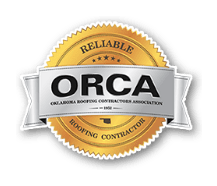Types of Fungus and Its Ill Effects on Your Roof

Age and condition of the roof are important considerations for potential homeowners in their quest for a building. There is a lot that does not correctly preserve the lifetime and health of your roof. In this article we address various roof fungal forms, what causes them to grow and how they can be handled and prevented in the future.
Four forms of roof fungi, whether your house or your health is affected, have the most trouble. You may need an extensive roof repair if the growth of the fungus is uncontrollable.
Algae is the first one we’ll discuss. This fungus affects the roof itself in particular when it is not taken care of immediately after it is detected. Algae will consume the shingles and trap moisture as well. When the spores land on your roof, they will make a home for themselves. The best place for algae growth is very humid and muddy, spreading over your roof. The black and green colors of their roofs should be sought in households on the extreme south, Middle West, northeast, and pacific coasts.
All will hear about the next roof fungus- Moss. This dense green fungus can be a beautiful aesthetic feature outside your house if properly maintained. Like most fungi, however, moss also has a moisture attraction that can affect your roof’s health. The more the moose stretches over your roof, the more moisture can bring to your roof. This may penetrate the shakes and shingles into the wood and contribute to roof red.
For a homeowner, mold is one of the most complicated fungi. It’s not only stupid, but also really risky for your families and your health. Its distinguished scent and look make it easy to recognize. The color can be slender black, brown or even dark green. Humidity deposits again attract mold. On wood and dry walls, where water can slip, is the most popular place to cultivate the mold.
Mildew, like mold, is very toxic, when left to grow. The last thing we’re talking about. In comparison to its fungal relatives, mildew spreads very easily to hot and wet environments. This includes roofs not fitted with adequate drainage systems. Thanks to the wide color spectrum of light gray, rose or black, you will see this nasty mushroom.
Factors That Are Popular
There’s one overarching aspect that they all share after discussion of these fungi: moisture, moisture, and moisture. Any of these fungal infestations can lead to excess moisture on your roof. Mold and Mildew are the two most toxic fungi. If you are exposed to it for too long, this may cause severe respiratory issues in the family.
How Roof Fungus Should Be Treated?
You should be able to clean the roof if it has not compromised the structural integrity of the roof. With a 1:1 combination of bleach and water you can do this easily. On touch, blueberry kills fungus. Mix the bleach and water easily, put a mop on your roof, and pull off the roof. Now is the best time to search your gutters for proper drainage.
Treat the roof with a humidity-resistant solution after washing the roof to help preserve moisture. Try to trim branches hung over your roof next. Then try. Excess water may accumulate over hanging branches. Ensure your shelter and roof will heat and moisture with the ridge winds properly unload.
So you may have unwanted fungi causing a leak if you find water, peeling paint, plaster peeling, or discoloration. Call us today, we will be happy to come and help you return to the safe, fungus-free world with proper roof repair. All American Roofing in OKC will assist you in your roofing requirements.







